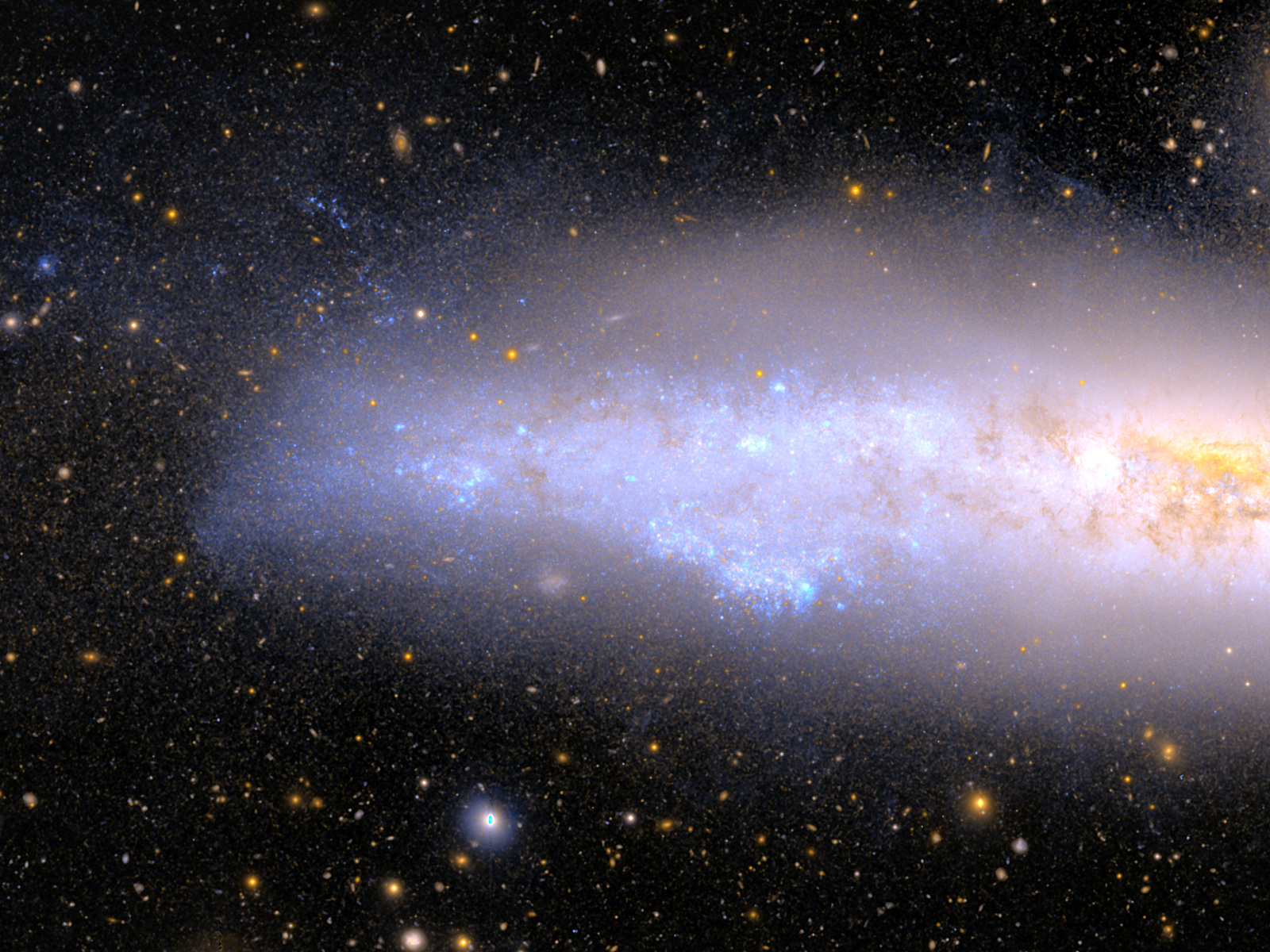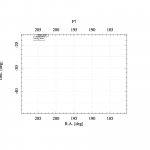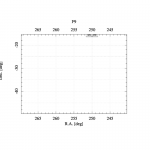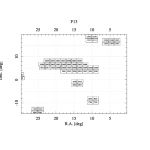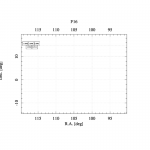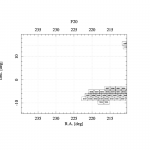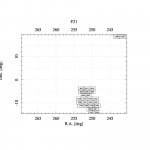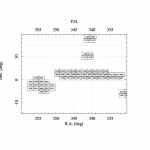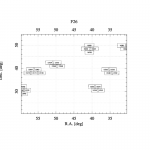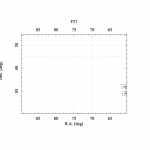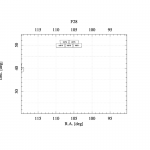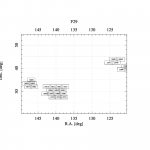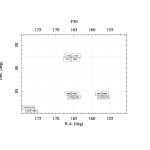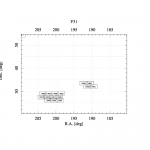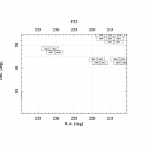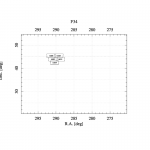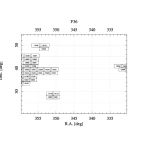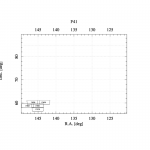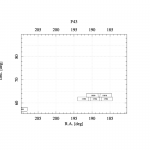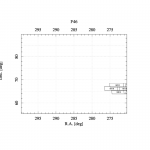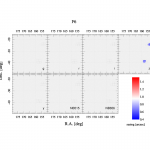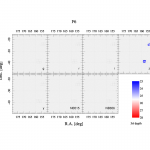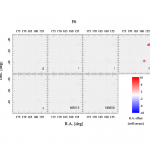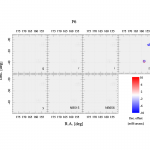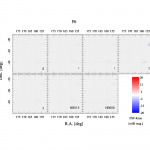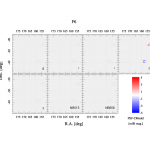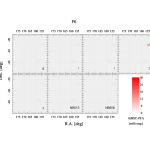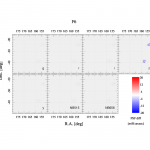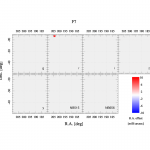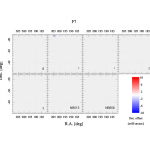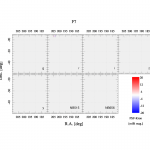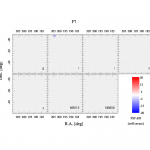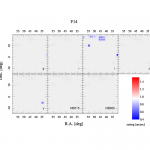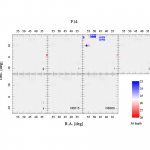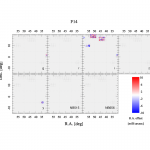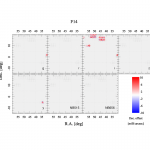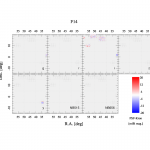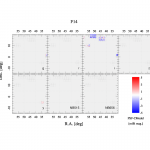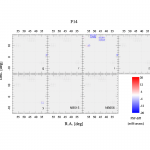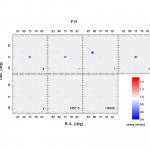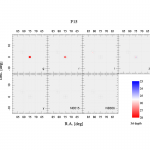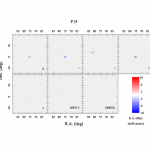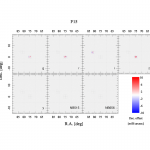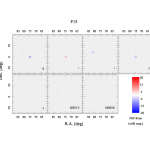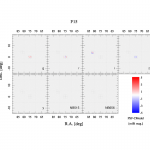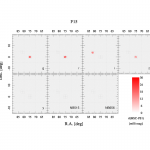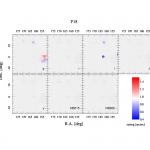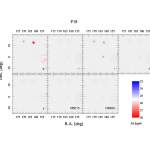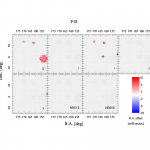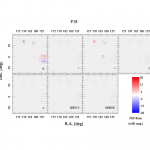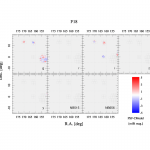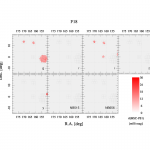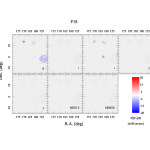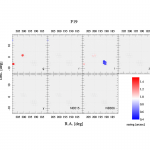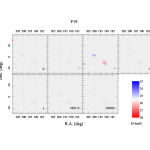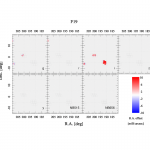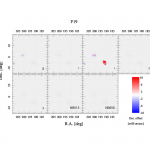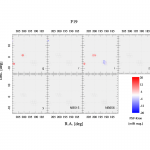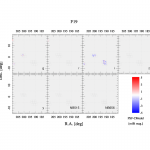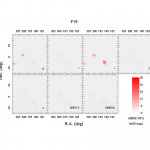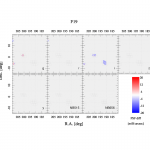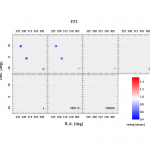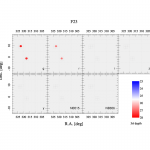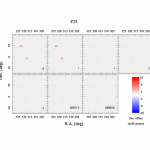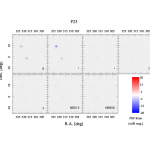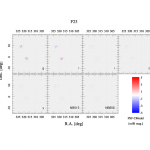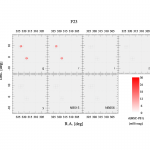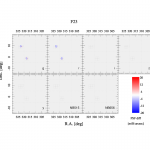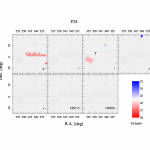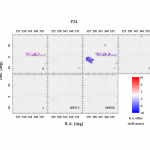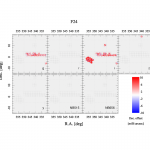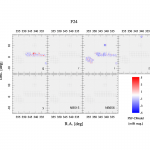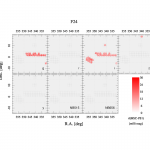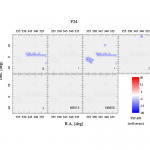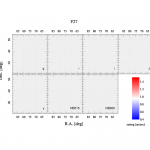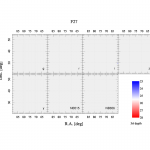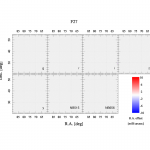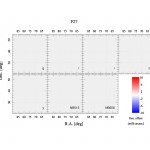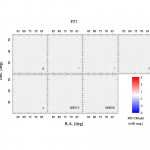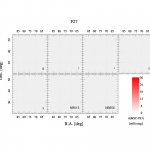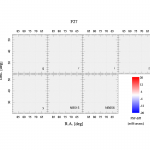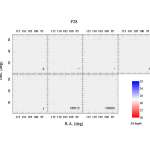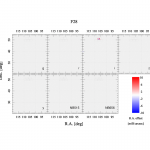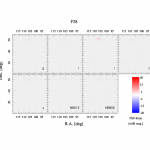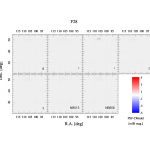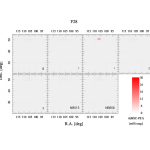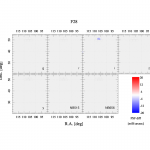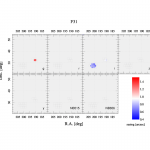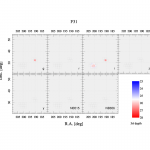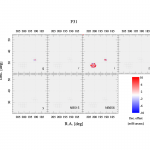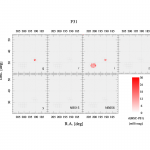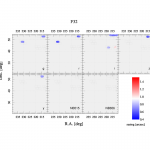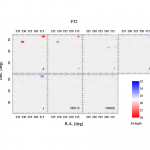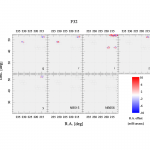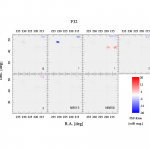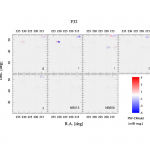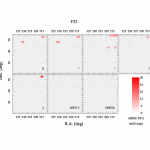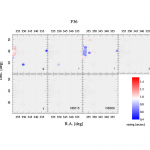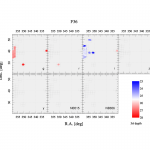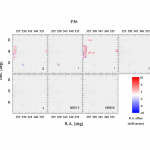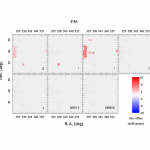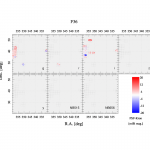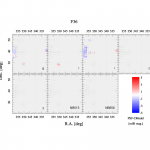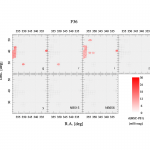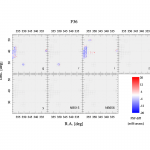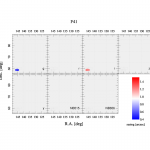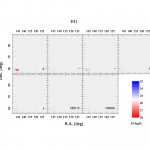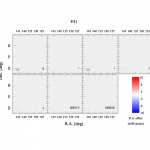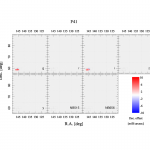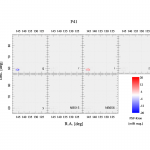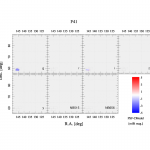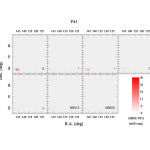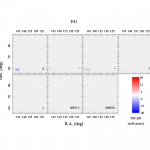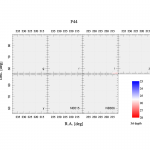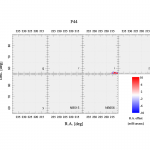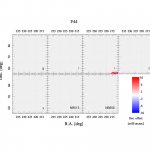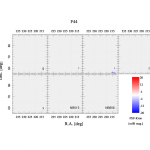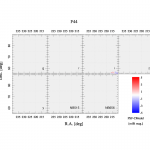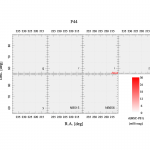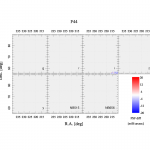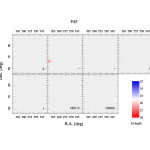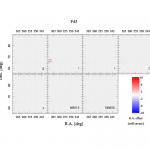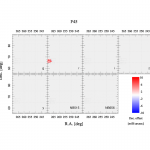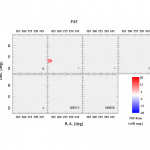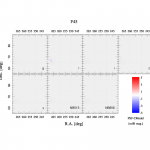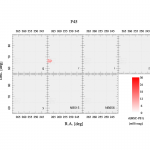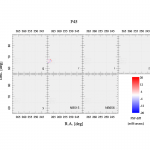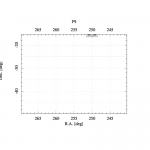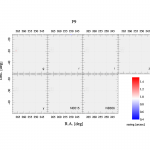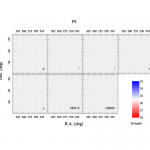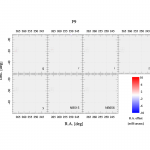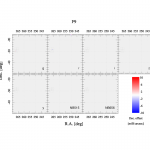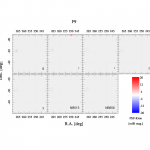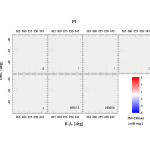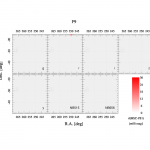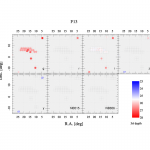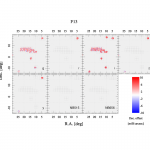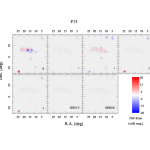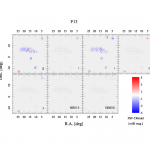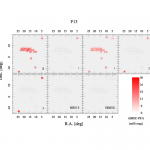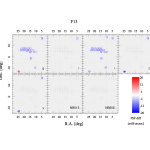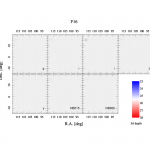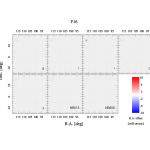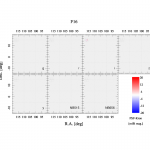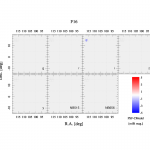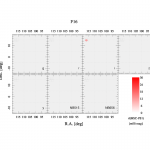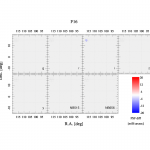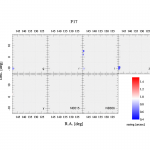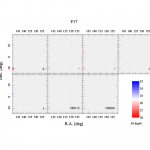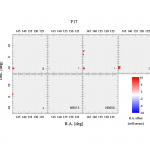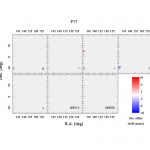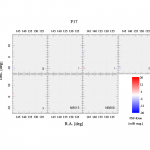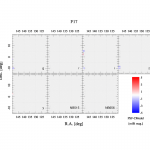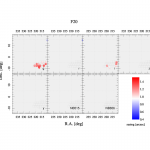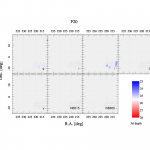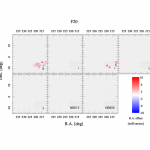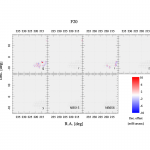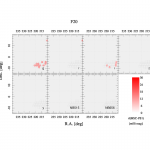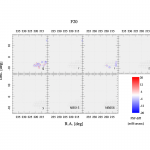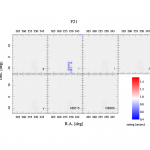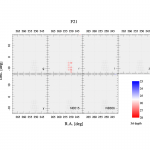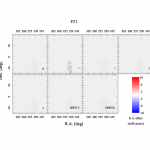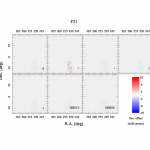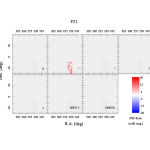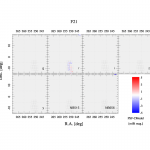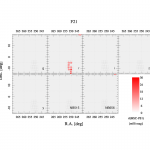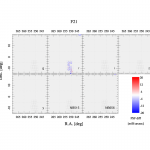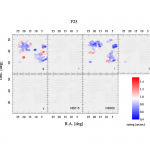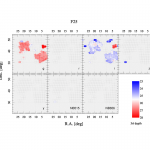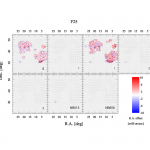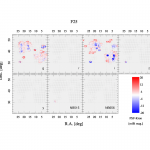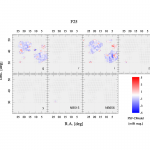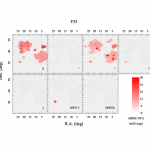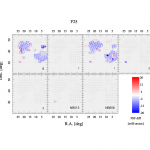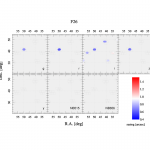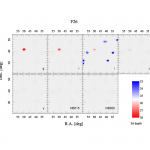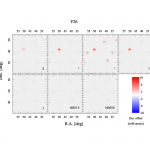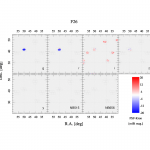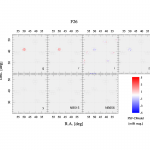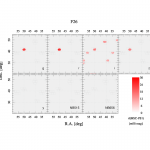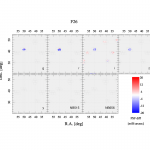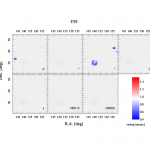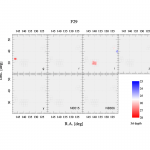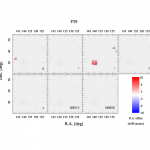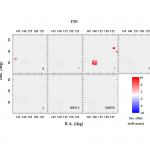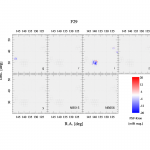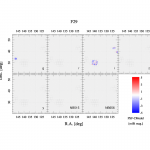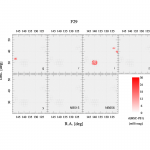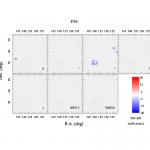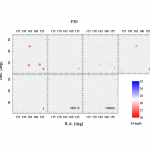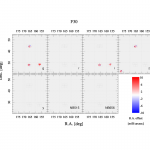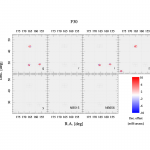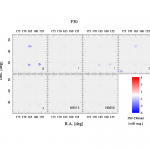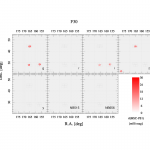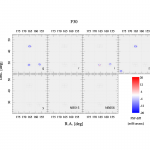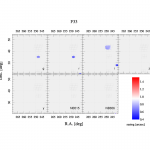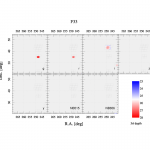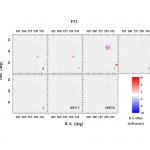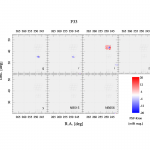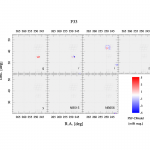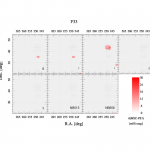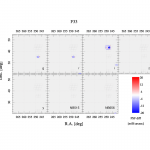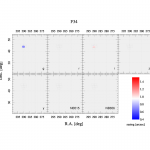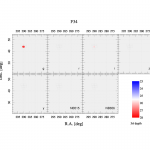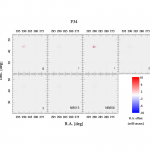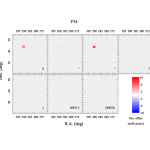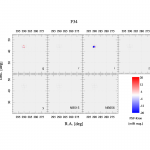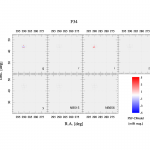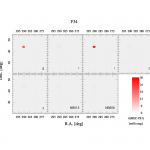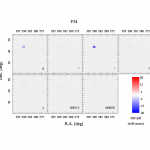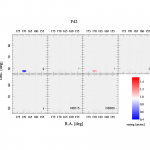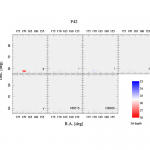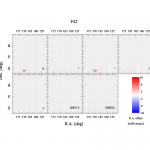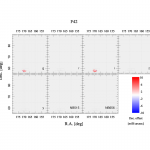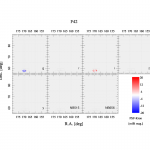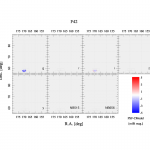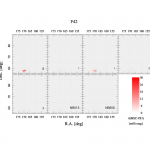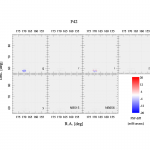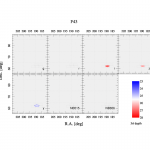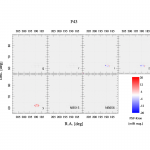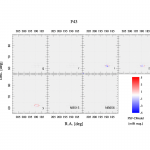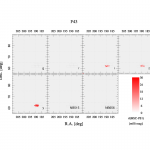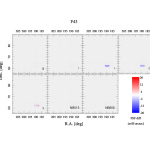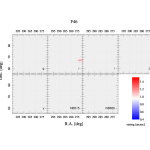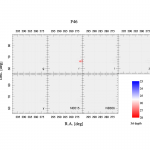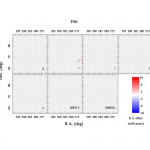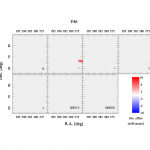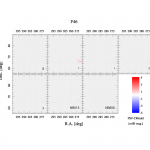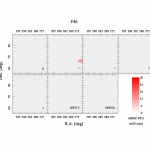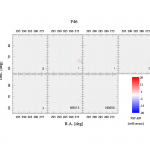This page summarizes the data currently available from HSCLA. The current version of HSCLA serves data from PI-based programs in 2014, the first year of HSC science operations. Data from the Subaru Strategic Program are served separately at this site.
All the catalog products have been ingested to the database, and there are various online tools to help you retrieve the data from our server. All of them are described in the Data Access page.
Field Coverage
As HSCLA is based on PI-based programs, the field coverage is quite patchy. We split the sky into 48 fields using the simple R.A., and Dec. cuts as shown below. These field IDs can be used to retrieve data in each field from the database (see a sample query available from the SQL editor). The blue regions are observed in at least one filter. The easiest way to find the available filters in each field is to look at the QA plots shown towards the end of this page. The blow-up of each field with tract IDs indicated can be found in the carousel slide below.
Filters
The figure shows the total responses of the filters included in HSCLA. The electric version of the responses is available here.
Flat Files
All the catalog products have been loaded to the database, where you can send queries to retrieve data of your interest. There are other data retrieval tools, all of which are described in the Data Access page.
All the flat files from the processing pipelines are also available. Each file is described in the figure on the left. We expect most users are interested in coadd images. They can be found as deepCoadd-results/[filter]/[tract]/[patch]/calexp-[filter]-[tract]-[patch].fits, if you follow the file tree. You can also use a file search tool for bulk download.
Details of the other files can be found below.
ICSRC: Catalog of bright sources detected and measured on a CCD, and used in astrometric and photometric calibration. (FITS BINTABLE)
SRC: Catalog of sources detected and measured on a CCD, output from the final stage of the single frame processing. See CALSRC, too. (FITS BINTABLE)
SRCMATCH: Source catalog (SRC) cross-matched with the external reference (PS1) sources. Identification numbers and separation angles in cross-matching are recorded for the external sources. (FITS BINTABLE)
SRCMATCHFULL: Another form of SRCMATCH, in which coordinates and fluxes of the external sources are explicitly listed (de-normalized) rather than listing the identification numbers only. (FITS BINTABLE)
CORR: CCD image with calibrated coordinates and magnitude zeropoint from the single frame processing. See CALEXP, too. (Muliti-extension FITS IMAGE + BINTABLE)
BKGD: Sky background model subtracted from a CCD image. (Multi-extension FITS IMAGE)
skyCorr: Residual pattern to be subtracted from a CORR image to get the global sky subtraction applied. (Multi-extension FITS IMAGE)
fcr: Contains flux scale and its positional variation of a CCD determined by mosaicing. (Multi-extension FITS)
wcs: The world coordinate system of a CCD determined by mosaicing. (Multi-extension FITS)
CALEXP: Corrected image (CORR) with the flux and WCS corrections from the internal calibration applied. (Muliti-extension FITS IMAGE + BINTABLE)
CALSRC: Source catalog (SRC) with the flux and WCS corrections from the internal calibration applied. (FITS BINTABLE)
photoCalib: Ignore.
det: List of source positions and footprints detected on a coadd patch. (FITS BINTABLE)
det_bkgd: Constant background subtracted in the object detection phase.
warp: Image of a single visit (CORR) transformed onto a destination tangential plane in a tract. (Multi-extension FITS IMAGE + BINTABLE)
psfMatchedWarp: warp image convolved to a common seeing. (Multi-extension FITS IMAGE + BINTABLE)
calexp: Coadd image in a single band, or resultant image from the Stack stage, which combines all the overlapped warp images. (Multi-extension FITS IMAGE + BINTABLE)
$(patch)_nImage: Image representing a number of visits contributed to each pixel in coaddition. (Multi-extension FITS Image)
$(patch): Coadd image in a single band right after the coaddition and before the source detection stage, in which sky background is slightly updated. (Multi-extension FITS IMAGE + BINTABLE)
mergeDet: Merged list of source positions and footprints from all filters in a coadd patch. (FITS BINTABLE)
meas: Single-band source catalog measured on each of sources in a coadd image listed in mergeDet. Peak positions and shapes of sources are determined in a band being measured. (FITS BINTABLE)
srcMatch: Single-band source catalog (meas) cross-matched with the external reference (PS1) sources. (FITS BINTABLE)
srcMatchFull: Another form of srcMatch. Coordinates and fluxes of the external sources are explicitly listed (de-normalized) in the same manner as in SRCMATCHFULL. (FITS BINTABLE)
ref: List of source positions and shapes determined by merging results of the single-band measurements (meas) in a coadd. Reference catalog used for the final forced measurement. (FITS BINTABLE)
forced_src: Source catalog from a multi-band measurement, which is performed on each of sources listed in the ref catalog. Positions and shapes are held fixed in the reference band in the measurements. Final catalog from the forced photometry. (FITS BINTABLE)
Data Quality
We have performed a number of quality assurance tests. Refer to the data release paper for details, but in short, we checked (1) seeing, (2) depth (5sigma for point sources), (3, 4) astrometric offsets against Gaia both in R.A., and Dec. directions, (5, 6) internal photometric consistency by comparing PSF-Kron and PSF-CModel magnitudes for point sources, (7) external photometric comparison against PS1, and (8) and the PSF size residual between the observed and model PSF sizes. These tests are performed for each field separately. We encourage you to look at their fields of interest for exploiting the data for science.
F6
F7
F14
F15
F18
F19
F23
F24
F27
F28
F31
F32
F36
F41
F44
F45
F9
F13
F16
F17
F20
F21
F25
F26
F29
F30
F33
F34
F42
F43
F46
Bright Star Mask
Regions around bright stars suffer from elevated background due to the stellar halo and many spurious sources are detected there. It is a good practice to mask those regions for scientific analyses. We have generated the bright star masks to define the problematic regions around bright stars. Each object in the database has a flag indicating whether it is in the mask or not and the flag is stored in the mask table. The detailed definition of the mask sizes can be found in this document.
Random Points
We draw random points over the entire regions in the HSCLA with a density of 100 points per square arcminutes. These points are used for various purposes, e.g., one can measure the effective survey area, the points can be used as a random sample for clustering analyses, etc, etc. These points are included in the random table. This page from the SSP website is quite useful. Make sure to change the schema name from pdr2 to hscla when you use the queries from that page.
Known Problems
As we use the same processing pipeline as the the HSC-SSP public data release, the HSCLA data have the same issues as HSC-SSP. We choose to centralize the issue list at the HSC-SSP website. Please refer to this page. If you discover a new issue, please report to us.
